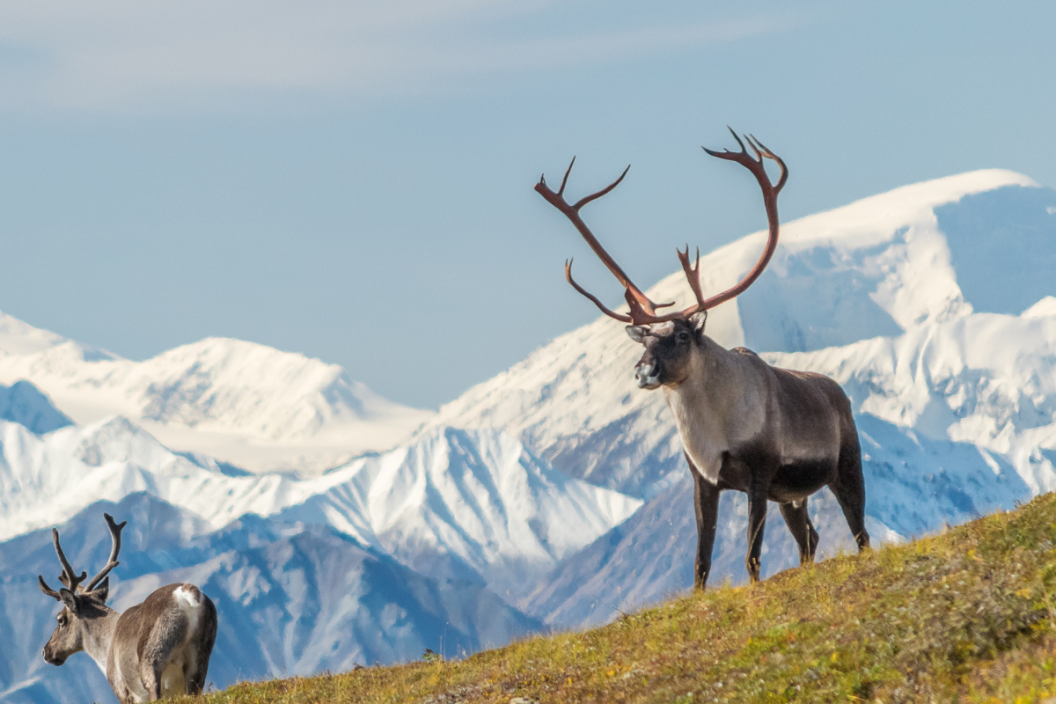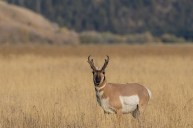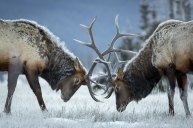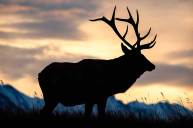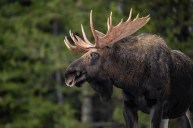North America offers some of the best hunting on the planet, so much so that many of our territories are commonly featured as the top hunting destinations by hunting experts from other countries. From desert Coues deer in the American Southwest to grizzly bears that rule the mountain ranges of Alaska, it's hard to beat this continent as far as hunting big game goes. Many of these animals require years of applying for tags before actually being able to land one, and some will simply never be attained by hunters who enter every year for a lifetime. Because of the trophy element attached to North America's premiere game species, drawing a tag is often comparable to winning the lottery. But also similar to the lottery, you can't hunt them if you don't try your luck. Here are 12 game animals all North American hunters should try to harvest at least once.
Caribou

jamcgraw via Getty Images
Due to their environment, caribou hunting is an experience like no other. The tundra is cold, vast, and majestic and creates a hunting adventure you'll remember for the rest of your life. When domesticated, the animals, sometimes called reindeer, are massive, as bulls typically weigh about 400 pounds. Caribou hunts have the ability to present some grueling moments, as they often require anywhere from seven to 10 days in true backcountry wilderness, and the potential of not crossing paths with one single animal. Most hunters travel to Alaska or northwest Canada to try and harvest one of these beautiful creatures.
Coues Deer

mlharing/Getty
Coues Deer is commonly referred to as "The Gray Ghost" for a good reason. This subspecies of the whitetail deer thrive in the harsh conditions of the desert. Although related to the whitetail deer, the Coues deer is much smaller in stature, typically weighing around 100 pounds and boasting smaller antlers than its eastern cousin.
One of the most challenging parts of this hunt is locating these animals. They have adapted to avoiding predators by blending into their environment and disappearing within seconds, making their nickname very appropriate. This hunt requires physical and mental toughness, as you can spend days hiking through rough terrain before you even lay eyes on one. Although very challenging, these deer offer a hunt you won't soon forget.
Rocky Mountain Elk
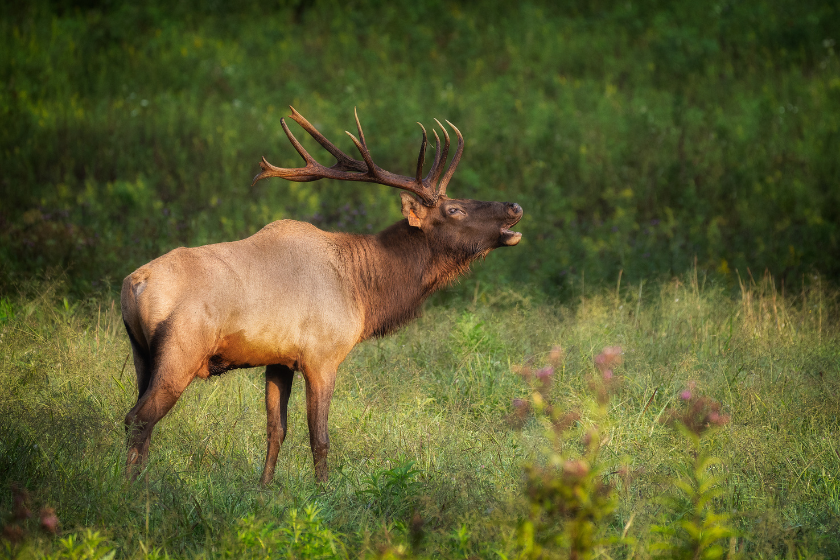
MattCuda via Getty Images
Rocky Mountain elk hunting is one of the ultimate North American hunting experiences. They live in the most beautiful, mountainous areas, and there isn't one place to elk hunt that doesn't provide gorgeous scenery. One of the largest game animals on the continent, they can weigh up to 700 pounds. If you're rifle hunting, you'll want an adequate caliber, something like .30-06 or .308. Elk hunting continues to garner more and more attention, as long archery seasons that fall right in the middle of rut present some of the most spectacular moments any lane of hunting could ever offer. Add to the experience with one of the most incredible antler displays of any cervid, as well as some of the best-tasting game meat in the world, and you have yourself a tradition that sits atop almost every American hunter's bucket list.
Mountain Lion
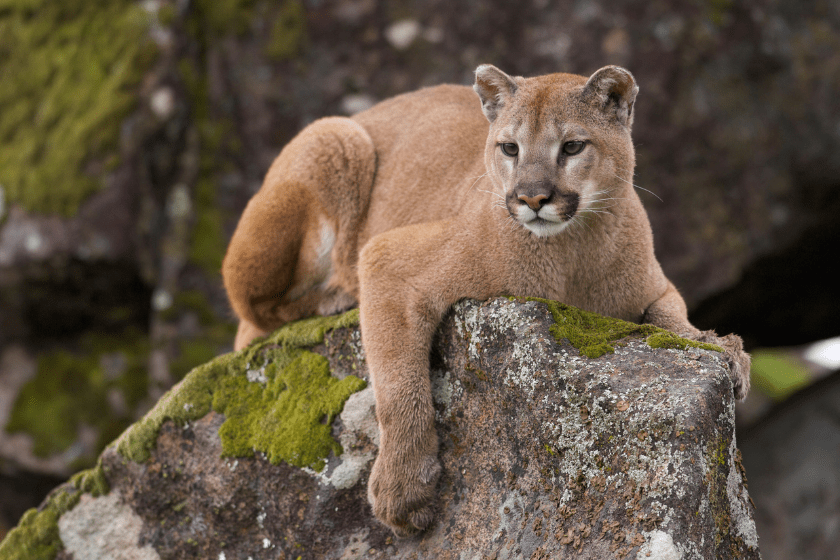
moose henderson via Getty Images
Hunting a cat is quite an experience and not an easy one. Mountain lions are stealthy and spend much time sneaking up on prey. Although you don't have to hunt with hounds, most recommend it (Washington and Oregon don't allow hounds, so check the regulations before you head out). If you don't live in cougar country, it's probably best to hunt with a guide. Not only do they know the terrain, but they also have experience hunting cats, and your success rate vastly improves.
Turkey
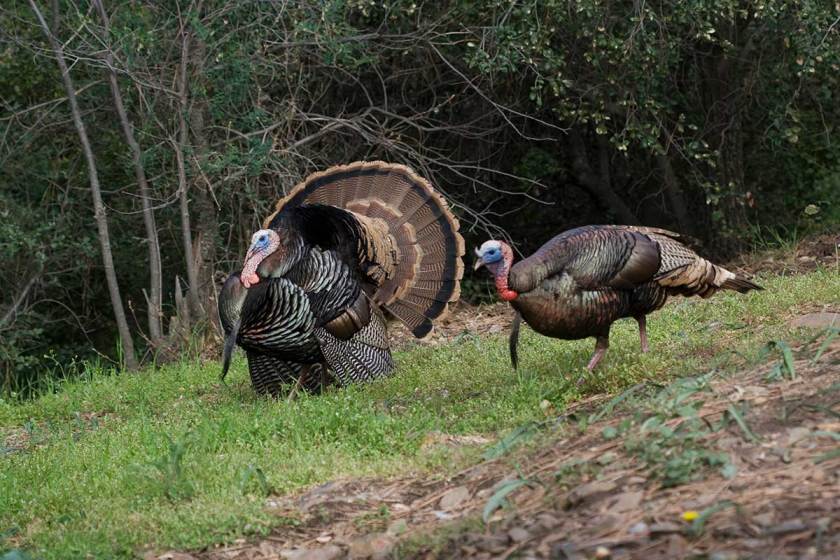
JoanWynn/Getty
Turkeys present an especially unique hunting challenge, one that's much different from any other bird hunt. The art of harvesting a gobbler comes down to your ability to communicate with the bird, without doing too much or too little. It takes time and skill to be a successful turkey hunter, and if you want to harvest a bird, you have to learn to use a turkey call effectively, which means you have to learn how to woo a bird, ultimately manipulating it to come to you. There are various ways to entice one, as you can emulate a hen or another gobbler, or use decoys to create a scene the bird can't resist. But once you've effectively convinced a gobbler, you'll have Thanksgiving dinner in the bag.
Grizzly Bear
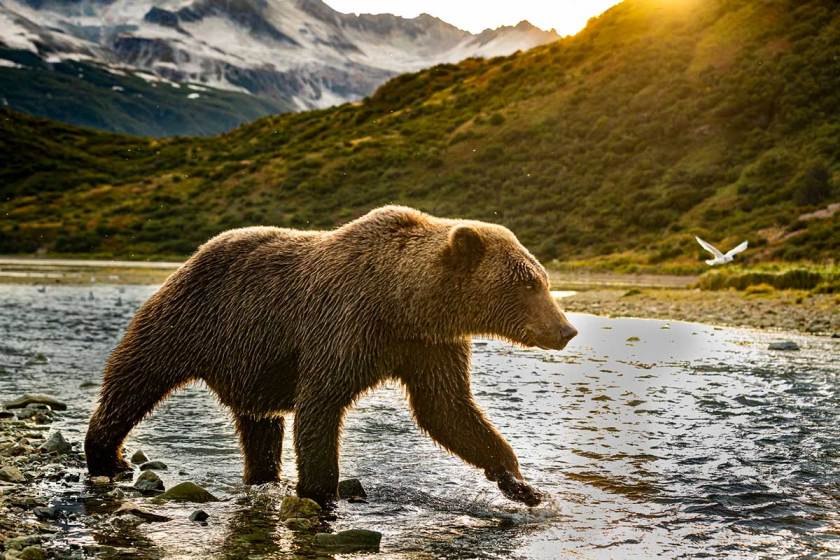
Dennis Stogsdill/Getty
Grizzly bears are giant and more aggressive than black bears; males can weigh nearly 800 pounds. An adult grizzly can easily take down an elk or moose, but one of their favorite meals is salmon. Because of this, they're often found around rivers, lakes, and coastal areas, especially during the spawning season. The grizzly is protected in some areas; hunting is permitted in others, such as Alaska and parts of Canada.
Javelina

mlharing via Getty Images
Often referred to as "Skunk Pigs," the Javelina isn't a pig. Instead, it is a member of the collared peccary family. These aggressive animals inhabit much of the southwest United States and Mexico. They boast a scent gland towards the bottom end of their back that they use to mark their territory and identify each other. Getting a Javelina tag is as easy as purchasing one online or in a local sporting goods store. Most ranchers welcome hunters to harvest them as they can be considered nuisances. What they lack in eyesight, they make up for in their ability to smell predators from great distances. They will present a challenge for bow hunters as well as rifle hunters.
Moose
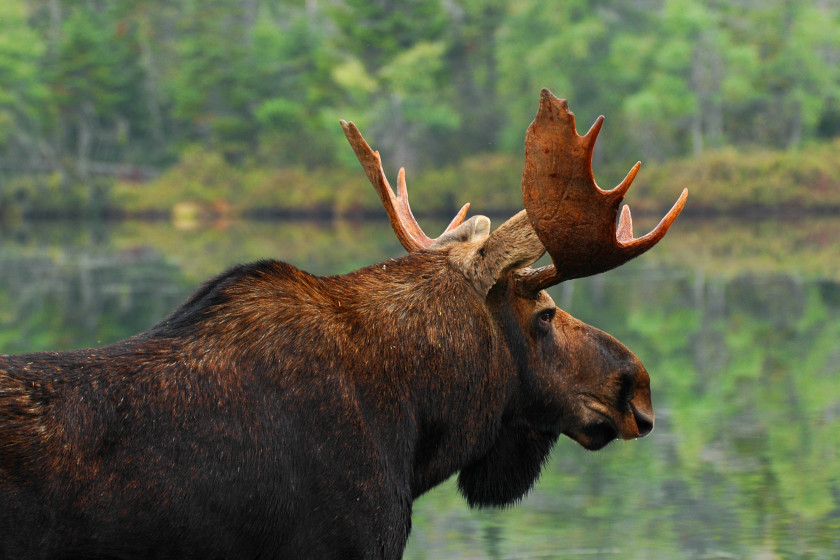
KJMPhotography via Getty Images
Typically found in Canada and the northern U.S., moose are the largest animal in the deer family and can reach almost seven feet tall at the shoulder and weigh as much as 1,500 pounds. Moose hunting can give the North American hunter a different experience as, unlike deer and elk, moose don't form herds and are typically rather solitary. Although the animals are slow-moving, they can become aggressive, especially during breeding.
Hunting big game summons the most excitement for a reason, and moose tags are certainly attainable if you plan a trip in the right state.
Pronghorn
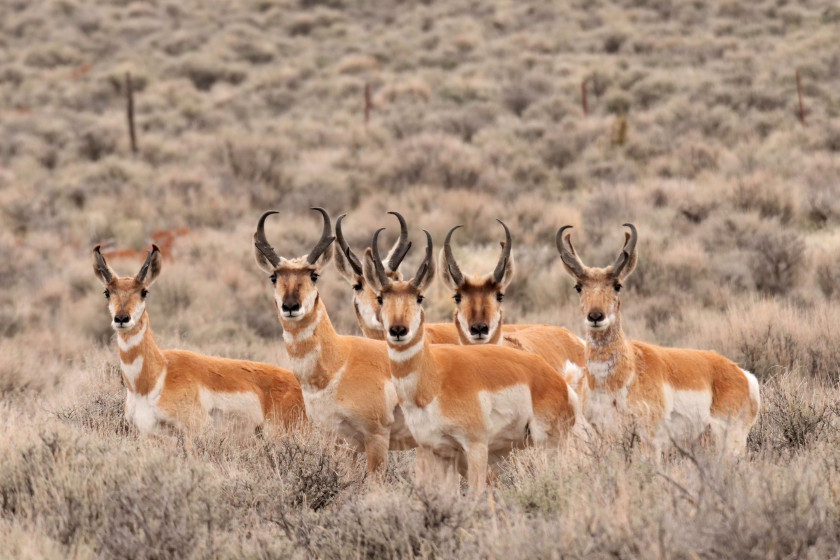
Getty Images: mlharing
Commonly referred to as the North American Antelope, the Pronghorn is, in fact, not an antelope at all. It has its own taxonomic family, Antilocapridae, and is just as closely related to goats as it is to antelopes. Pronghorns are the fastest animal in the western hemisphere and can reach up to 55 mph speeds. Over distance, this beast can even outrun a cheetah, sustaining 35 mph for at least 4 miles. They range from Canada through Texas to northern Mexico and have the longest land migration in the U.S.
Harvesting a Pronghorn can prove very difficult to most hunters, as they are incredibly paranoid due to an evolutionary trait of being hunted thousands of years ago by the now-extinct North American Cheetah. From personal experience, the best way to get into range with these speed goats is by decoying or setting up an ambush near a waterhole.
Bighorn Sheep
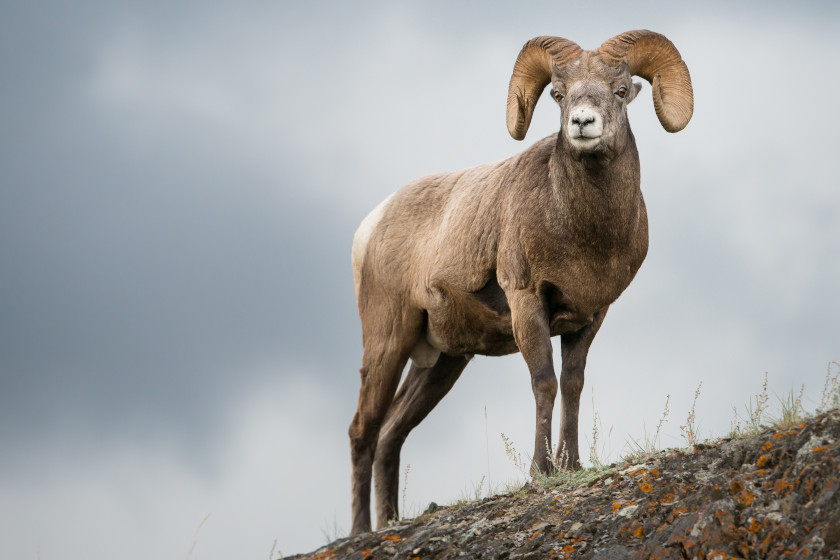
Getty Images: Jillian Cooper
Bighorn sheep can weigh as much as 500 pounds (not your typical farm sheep), with their horns alone weighing as much as 30 pounds. They range from southern Canada to Mexico.
One subspecies of the bighorn stays in the desert landscape of the American southwest. In contrast, the other subspecies tend to reside in mountainous areas. Because of their short body stature, snow is difficult to navigate, and the sheep stay on steep slopes to avoid it.
Although drawing a tag for these animals is a once-in-a-lifetime opportunity, the hunt itself is unlike any other and something that every avid hunter should experience if given a chance. Their intelligence and will to survive is only the second most challenging part of the hunt, right behind the mountainous shale terrain that these sheep thrive in.
Bison
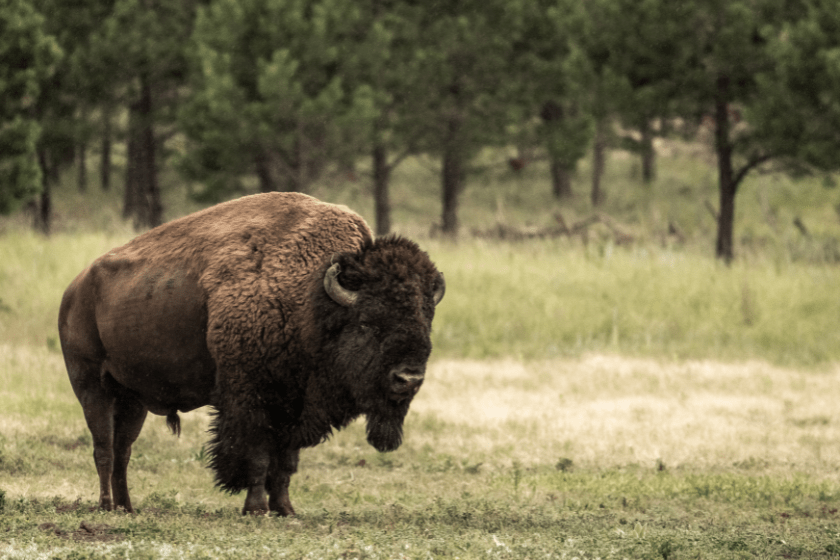
kellyvandellen via Getty Images
A close cousin to the buffalo of the wild west, bison are the largest land animal found in North America. Once nearly hunted to extinction, these game animals have repopulated and are entirely off the protected species list. Bison are unpredictable and can attack with little or no warning. Weighing 2,000 pounds and running at speeds up to 30 mph, you best have good aim while bison hunting.
Not many states offer bison hunts. Currently, only Utah, Wyoming, Alaska, Arizona, and Montana offer tags for them. You'll likely be on the waitlist for a long time. If you're eager to try hunting them, private ranches in the United States welcome hunters.
Whitetail Deer
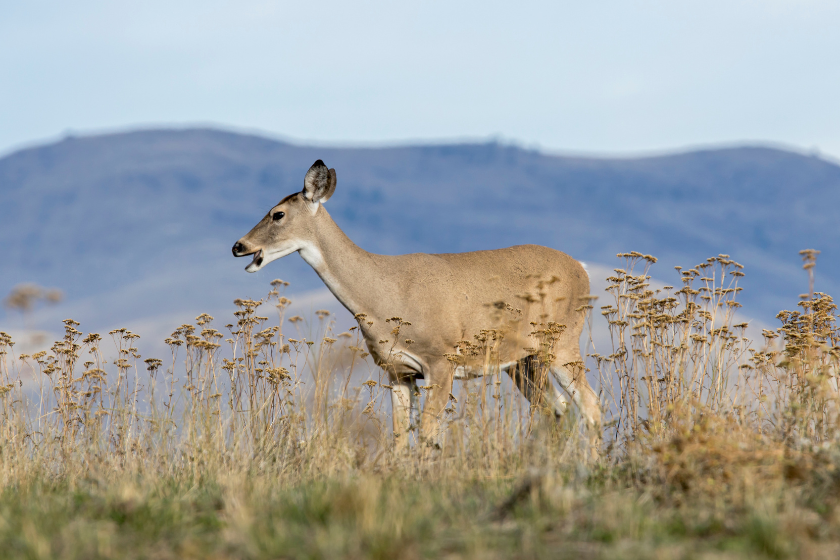
gjohnstonphoto via Getty Images
Last but certainly not least, the whitetail deer is on our list of game animals every North American should harvest. Found almost everywhere east of the Rocky Mountains and some places west of them, whitetail deer are the North American hunter's favorite harvest.
There is a reason millions of hunters climb into their treestand every year to try filling their whitetail tags. These animals have a wit that can prove challenging for even the most skilled hunters. Combining that with their impressive antlers and incredible and healthy meat, this is a hunt that everyone needs to experience.
